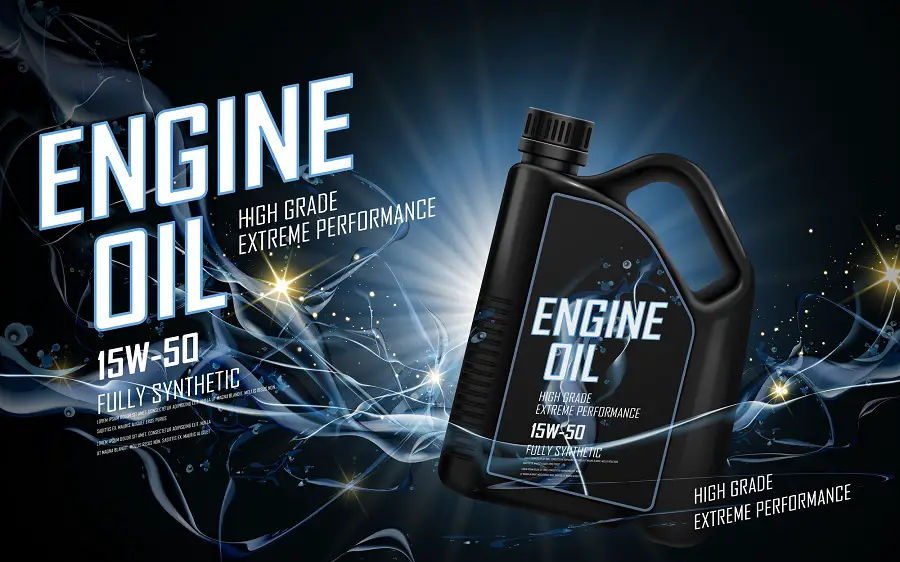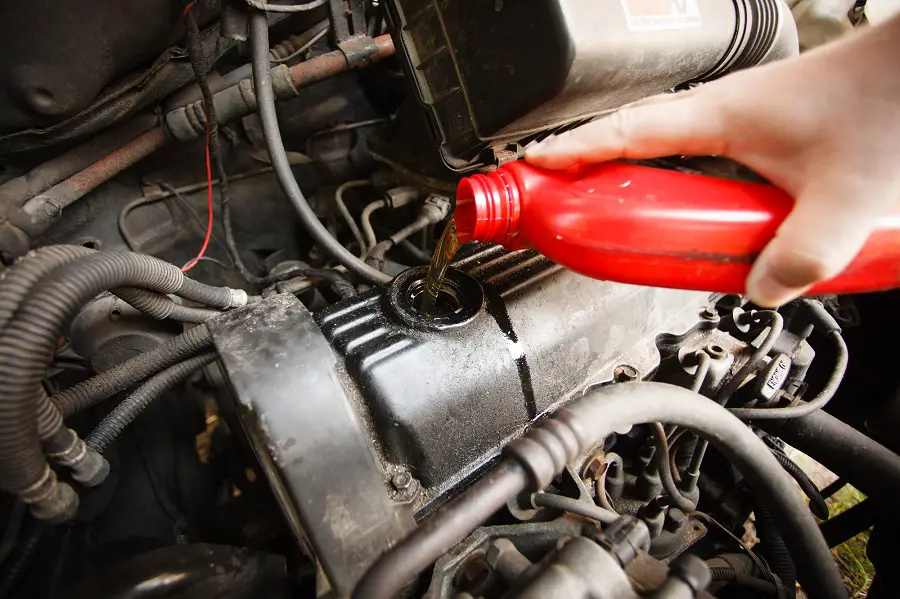My buddy came out to visit me from out of state. He wanted to check out my city and spend some time on our motorcycles and four-wheelers.
After he arrived he was doing a pre-ride checklist to make sure everything was ready for our trip. He noticed that his quad was low on oil so he asked me if there was a motorcycle shop nearby so he could grab some ATV oil.
I handed him some Mobile 1 synthetic motor oil and told him to use it. He said that he couldn’t because it’s not the same thing.
I’ve ridden four-stroke motorcycles and ATVs for most of my life and I didn’t know there was a difference in the oil. I’ve always just used some 10w-40 that’s made for cars.
Just like I do with every question that comes up, I added it to my article list and set out to find a definitive answer to it. Here’s what I found:
You can use automotive oil in an ATV or UTV if needed. But it’s not always recommended. Your best option is to use synthetic car oil, in 10w-40 weight, if you have to. But oils made specifically for ATVs, Motorcycles and UTVs are your best bet as they are engineered to protect those smaller engines.
Let’s get into the science and logic behind this in a bit more detail.

Is There a Difference Between ATV Motor Oil and Automotive Oil?
At the base of the discussion, the answer is yes. There are several differences between ATV motor oil and automotive oil. That isn’t to say that there aren’t any situations where you can use automotive oil in an ATV or motorcycle, but we’ll get to that later.
Simply put, the environment for your ATV or UTV engine is more rugged than your typical car or truck. ATVs will operate at higher RPMs, often have wet clutches and they get hotter.
ATV oil has a lower volume and different friction modifiers that are required to lubricate the engine, as well as help, prevent clutch slippage in most cases.
This is because most motorcycle engines and ATV / UTV motors use a single standard sump pump for the clutch, engine, and transmission. The oil has to work a bit harder to accommodate different conditions, more so than a car oil does.
Car oils typically have around four ingredients, and ATV oils have seven (or more) because they have additives to address different issues common to ATVs.
Cars don’t need rust protection or extremely hot or cold temperatures. On the other hand, ATVs don’t need oil that conserves energy to improve fuel economy. So the type of oil matters when it comes to the smaller engines where a lot of variabilities happen over a shorter period of time in more extremes.
Aside from this, viscosity plays a significant role in the functioning of the two vehicles. Viscosity measures the resistance to flow for an oil.
For optimal functioning, ATVs require distinct viscosity measurements they can only get through the application of a viscosity modifier. The viscosity modifier’s job is to adapt to various conditions and manipulate the oil viscosity as needed.
Cars get regular oil changes and do not need to maintain any stability when it comes or viscosity. ATVs need a specific oil that is just as good in six months as the first day you use it.
Lastly, the additives in car oils can cause the wet clutch to slip on an ATV, and lead to increased oil consumption, gear pitting, and the oil foaming up due to high temperatures.
It’s also important to note that the elements used in ATV, UTV, and Motorcycle oil filters are designed for oils created with specific friction modifiers and additives. That’s if they have an oil filter at all. If the oil filter doesn’t exist, the oil used can pick up contaminates that the correct oil wouldn’t have attracted.
These contaminates would normally be picked up in a car’s oil filter, but not in a UTV, ATV or dirt bike – so if you’re using regular motor oil that isn’t designed for these off-road vehicles you could damage the engine, wet clutch or other components because the type of oil you use.
For these reasons, there are notable differences between car oil and ATV oil.
Are There Any Instances When I Can Use Car Oil For My ATV/UTV?
Everything stated has to do with optimal performance according to the needs of an ATV. It also pertains to safety precautions in the instance that you’re operating your ATV and the parts are worn or not adequately protected.
Notwithstanding, anecdotal evidence suggests that you are fine to use automotive oil in your ATV as long as it does not say that it conserves energy on the front. The low viscosity will cause the clutch to slip due to reduced friction.
10w40 oil should be sufficient to keep the ATV running smoothly. Most 5w30 and 10w30 oils are typically energy-conserving and thus much thinner. The 10w40 is fine, especially if only used in situations where you needed to get somewhere, and a special ATV oil was unavailable.
However, if you’re not into the extra four bucks per quart for the ATV oil, car oil should not damage your ATV, at least not for some time. As stated, your engine parts may not have adequate protection with continual use.
What is the Most Common Weight of Motorcycle Engine Oils?
The most common weight used for motorcycles is the 10w40.
Motorcycles use the oil for multiple parts, including the gearbox and the engine. They have a special formula that protects the gears and the engine components simultaneously.
That means the oil had to offer a more balanced level of friction. If the friction isn’t high enough, the clutch won’t be able to engage, resulting in slippage.
Slippery enough, but not overly slippery, that’s the goal for motorbike oil. The oil supports the clutch performance, transmission, and a smooth-running engine.
Are There Special Additives in ATV/Motorcycle Oil?
Additives are a type of chemical compound that seeks to improve the oil’s base stock performance.
You can use additives to enhance the oil lubrication, clean any gummy residue or engine deposits, modify the viscosity, prevent rust and corrosion, and even prohibit the oil from foaming at temperatures that are too hot.
The reason that ATVs need additives is because of the frequency of use, the ATV runs hot, and the vehicle requires different viscosities depending on the temperature. Motorcycle oil and ATV oil are very similar.
Here’s how the additives work for two-stroke engines and some four-stroke engines.
The reason that lubrication enhancers are essential is that they ensure there’s less wear and tear on crucial parts. Detergents that are added to the oil will clean and then dissolve any carbon residues that form as a result of burning gasoline.
Acids and condensation cause oxidation and burning of the oil, but the additive can restrict engine corrosion of the most critical components.
Different engines have various requirements, but for the most part, if both the motorcycle and ATV are four-stroke, you can use the same oil. For two-stroke oils, the additives are different due to the combustion requirements.
What Are the Differences Between Two-Stroke & Four-Stroke Oiling?
The power requirements are different for the two types of engines because the four-stroke engine only completes two revolutions, while a two-stroke engine only completes one revolution.
If you were going to try to use a four-stroke oil for a two-stroke vehicle, it might cause the engine to degrade and create smoke.
The two-stroke engine has different requirements when it comes to lubrication. There’s no separate oil compartment on a two-stroke engine. Instead, the engine oil gets mixed with the fuel.
With a four-stroke engine, the oil goes through to different parts for lubrication, and it returns to the crankcase. The oil does not get consumed in a four-stroke engine the way it does in a two-stroke engine.
Due to these differences, the oils are also composed differently. The two-stroke oil has to be able to get mixed in with the fuel well to burn in the combustion chamber. The four-stroke oil has to keep the engine clean and protect the valve train from getting damaged.







